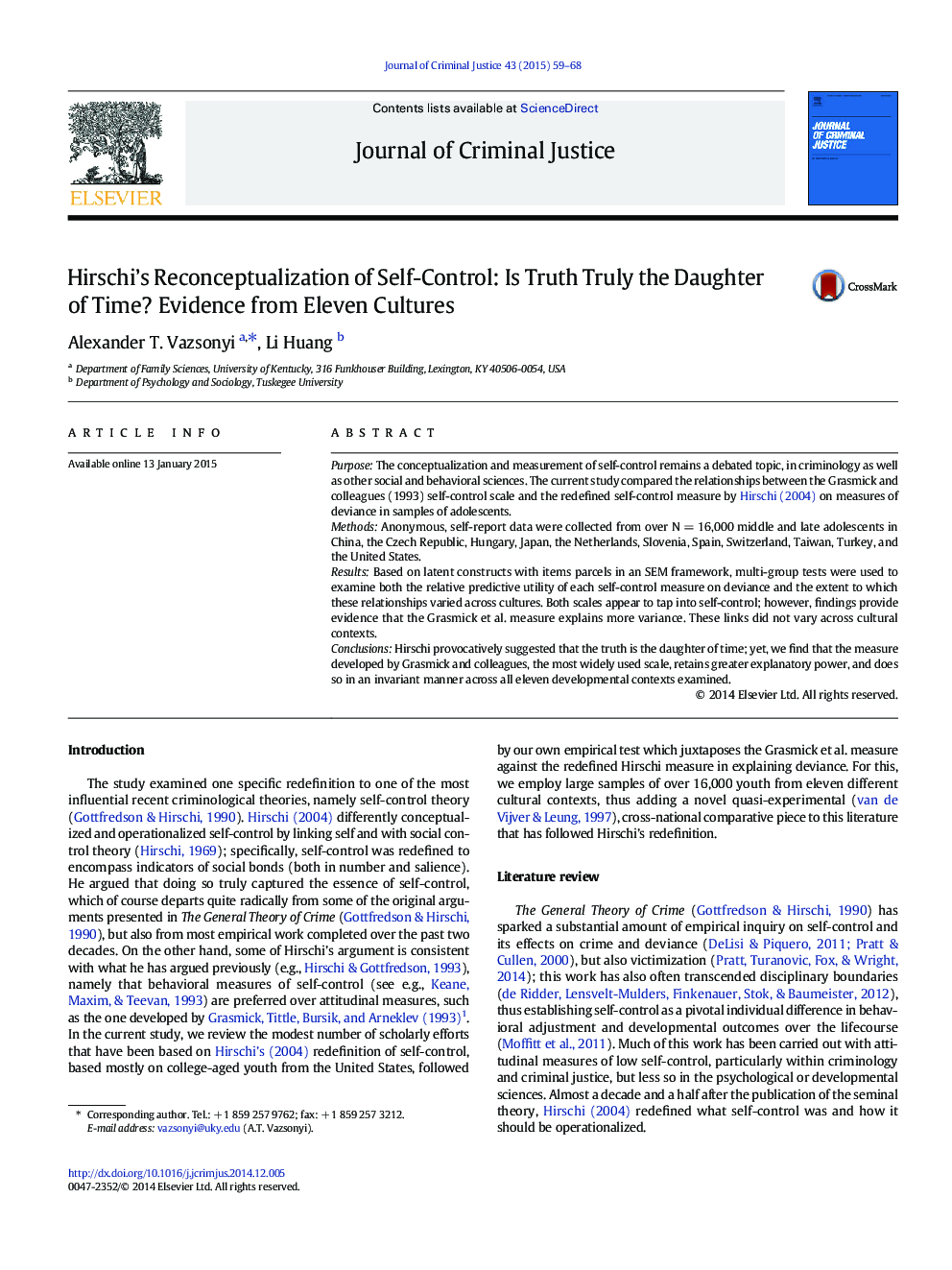| Article ID | Journal | Published Year | Pages | File Type |
|---|---|---|---|---|
| 882696 | Journal of Criminal Justice | 2015 | 10 Pages |
•Anonymous, self-report data from over 16,000 adolescents, eleven cultures•Cross-cultural study tests self-control-deviance links (Hirschi versus Grasmick et al.)•SEM multi-group tests reveal invariance in these relationships across countries•Hirschi’s reconceptualization has merit, yet explains less variability in deviance
PurposeThe conceptualization and measurement of self-control remains a debated topic, in criminology as well as other social and behavioral sciences. The current study compared the relationships between the Grasmick and colleagues (1993) self-control scale and the redefined self-control measure by Hirschi (2004) on measures of deviance in samples of adolescents.MethodsAnonymous, self-report data were collected from over N = 16,000 middle and late adolescents in China, the Czech Republic, Hungary, Japan, the Netherlands, Slovenia, Spain, Switzerland, Taiwan, Turkey, and the United States.ResultsBased on latent constructs with items parcels in an SEM framework, multi-group tests were used to examine both the relative predictive utility of each self-control measure on deviance and the extent to which these relationships varied across cultures. Both scales appear to tap into self-control; however, findings provide evidence that the Grasmick et al. measure explains more variance. These links did not vary across cultural contexts.ConclusionsHirschi provocatively suggested that the truth is the daughter of time; yet, we find that the measure developed by Grasmick and colleagues, the most widely used scale, retains greater explanatory power, and does so in an invariant manner across all eleven developmental contexts examined.
